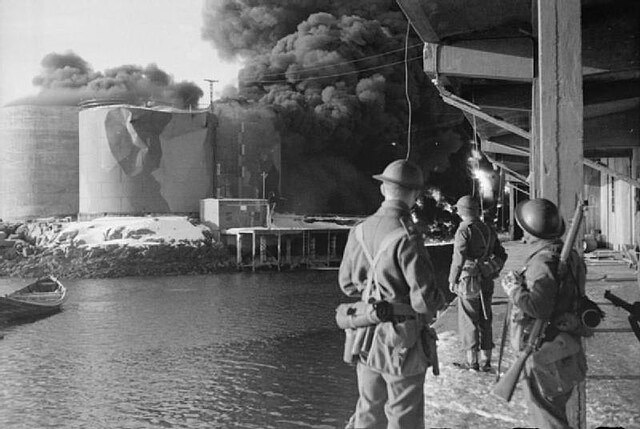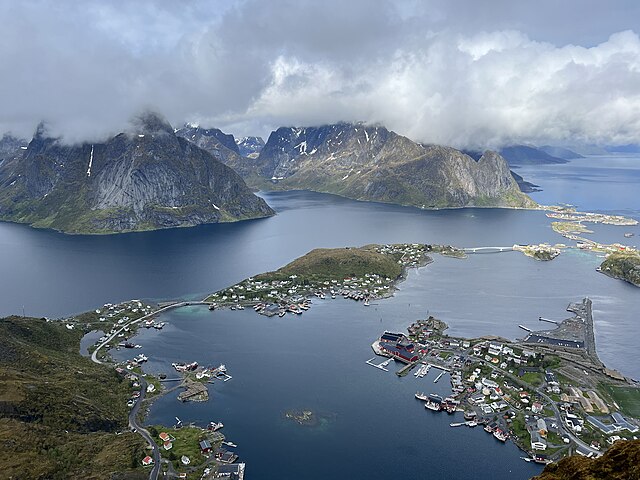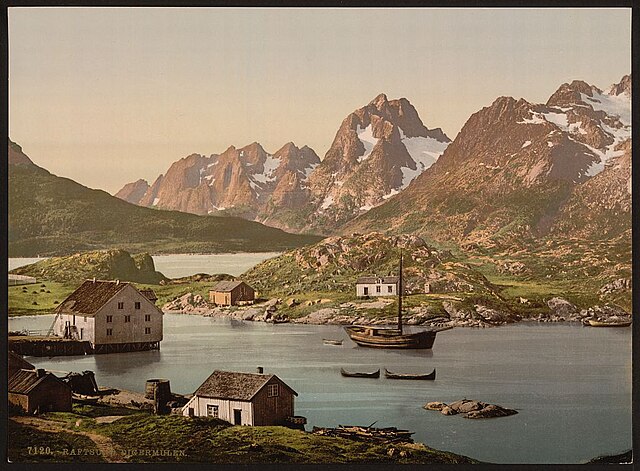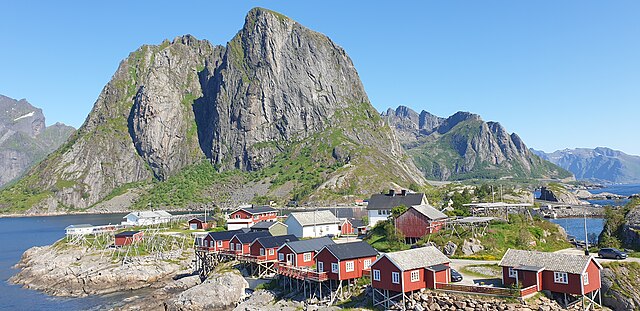Operation Claymore was a British/Norwegian commando raid on the Lofoten Islands of northern Norway during the Second World War. The Lofoten Islands were an important centre for the production of fish oil and glycerine, used in the German war economy. The landings were carried out on 4 March 1941, by 500 men of No. 3 Commando, No. 4 Commando, and a Royal Engineers section, and 52 men from Norwegian Independent Company 1. Supported by the 6th Destroyer Flotilla and two troop transports of the Royal Navy, the force landed almost unopposed. The original plan was to avoid contact with German forces and inflict the maximum of damage to German-controlled industry. They achieved their objective of destroying fish oil factories and some 3,600 t of oil and glycerine. The force returned with some 228 German prisoners, 314 Norwegian recruits, and a number of Quisling regime collaborators.
Commandos watching fish oil tanks burning.
HMS Somali, leader of the 6th Destroyer flotilla
Arrival at Lofoten on 4 March 1941
Burning oil tanks seen from HMS Legion
Lofoten is an archipelago and a traditional district in the county of Nordland, Norway. Lofoten has distinctive scenery with dramatic mountains and peaks, open sea and sheltered bays, beaches and untouched lands. There are two towns, Svolvær and Leknes – the latter is approximately 169 km (105 mi) north of the Arctic Circle and approximately 2,420 km (1,500 mi) away from the North Pole. The archipelago experiences one of the world's largest elevated temperature anomalies relative to its high latitude.
Reine, Lofoten, seen from top of Reinebringen
"Raftsund, Lofoten, Digermulen, Norway", c. 1890–1900.
Svolvær in Lofoten, Norway. View from the ferry harbour
Hamnoy








